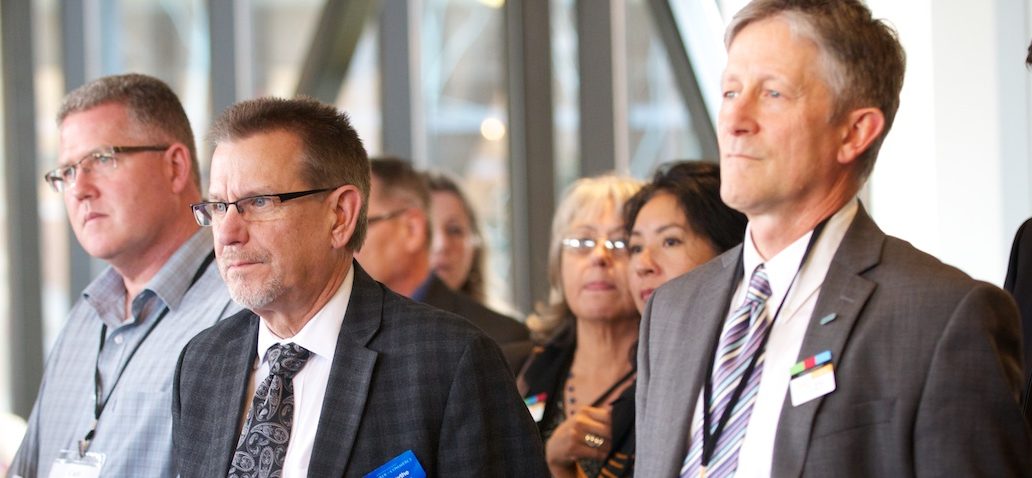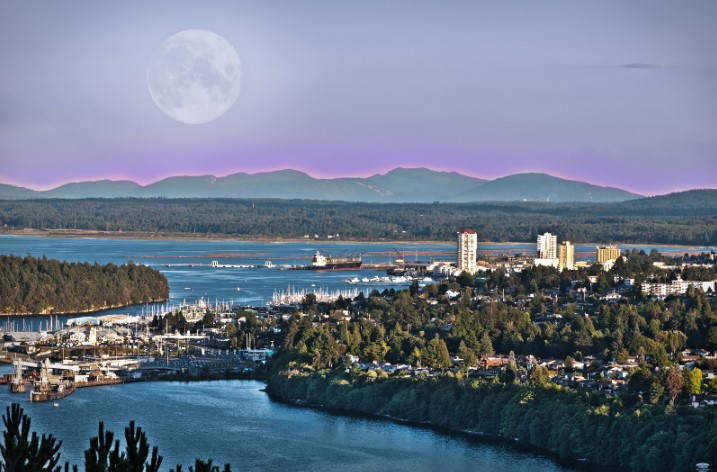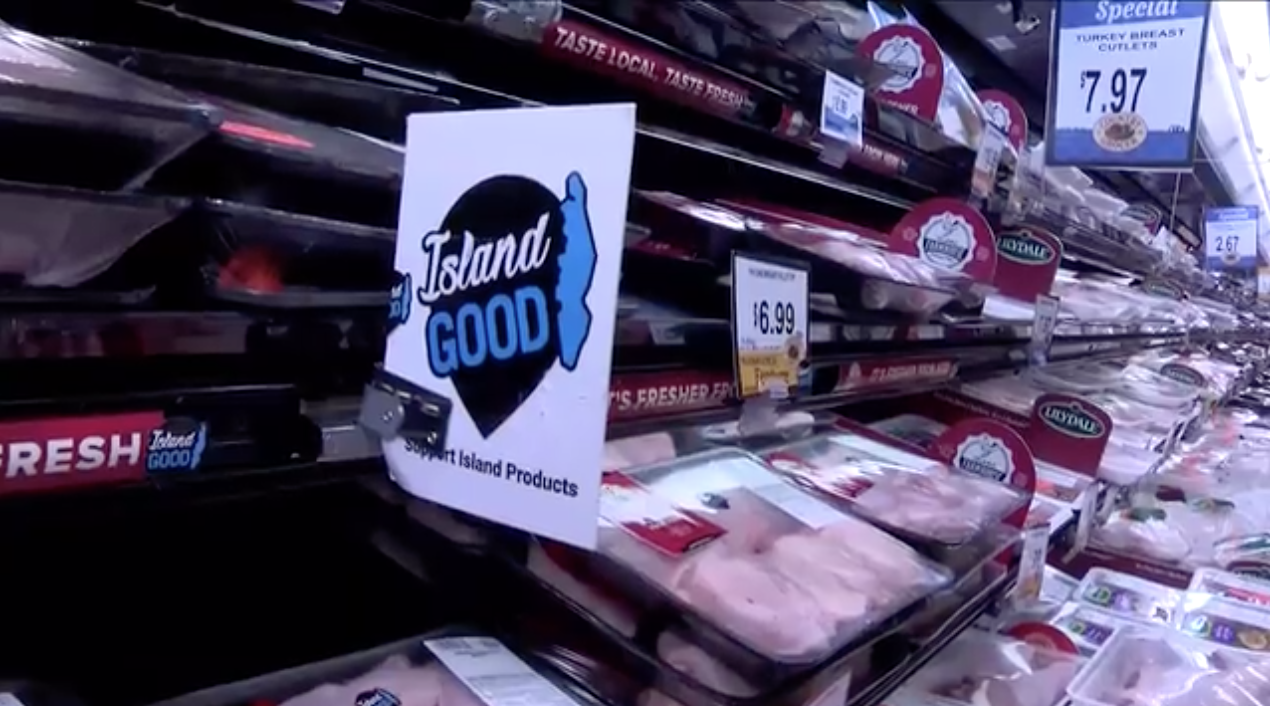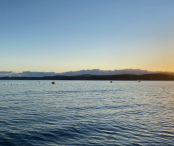
“I remember spring and summer time on the big, low tides, we’d go harvest kelp off the rocks, and we’d dry it out, preparing for winter,” Claxton said, driving a vessel full of Cascadia Seaweed staff, and IndigiNews, out to their kelp farm near P’AQwƎČ, colonially named James Island.
The kelp has been disappearing from the inlet at an alarming rate, he said. The cause of which, Claxton is unsure, though some research suggests it could be an explosion of sea urchins while starfish continue to die off. But a recent partnership is helping to both restore the population, and employ the people of the Nation.
A new commercial kelp farm is the result of a new partnership between SȾÁUTW̱ First Nation and Cascadia Seaweed, in what’s being hailed as an ecological, and economical win for both the ocean, and the nation.
This partnership is a result of the SȾÁUTW̱ First Nation exercising their jurisdictional rights over their waters with the creation of a ȽEKES (edible seaweed) farm.
In October 2021 SȾÁUTW̱ First Nation granted a licence to Cascadia Seaweed to create a commercial seaweed farm on their behalf. Shortly after, Cascadia installed over twenty kilometres of line near the James Island Pier to begin the process of ȽEKES farming.
“We need to prepare for the future and manage our own traditional lands, air and sea,” Chrissy Chen, fisheries manager for SȾÁUTW̱ First Nation said at a celebration of the Cascadia and Tsawout’s agreement. “As First Nations stewards, we need to pass on the rich ecological knowledge of our ancestors to ensure that economic activities taking place in our marine environment are safe and sustainable. This includes the protection and regulation of food, social and ceremonial purposes and benefits.”
The celebration of Cascadia and SȾÁUTW̱ First Nation’s agreement, held in February at on W̱SÁNEĆ homelands featured voices across the board – Chief and Council of the SȾÁUTW̱ Nation, Elders, lawyers, and the chairman from Cascadia Seaweed.

ȽEKES (seaweed) farm creation story
The process of creating the seaweed farm began with collecting wild, reproductive kelp from the area and harvesting ‘sori’ which is reproductive material. Erin Bremner-Mitchell, manager of Communications and Engagement at Cascadia Seaweed explains that moving forward, after they harvest the farm this spring they will take reproductive materials from the farm itself – but initially they started the growing process from wild kelp in the vicinity of each farm to protect genetic biodiversity.

The sori is cut out and cleaned from wild seaweed, stressed and cooled, then rehydrated in seawater, creating a spore solution.
The spore solution is poured into tanks with PVC tubes wrapped in twine, for the “baby seaweeds” to attach to and start growing. After growing for about 45 days, “when we can see they’re brown and fuzzy on the twine, we know they’re ready to be out planted in the ocean.”
The farm is made of anchors on the seafloor, and using floats and buoys on the surface Bremner-Mitchell explained. The seeded twine gets wrapped around the production lines, which are placed three metres below the surface.
The ȽEKES is planted in the sea in December.
“There’s nothing we can do other than monitor their growth. They have everything they need to grow from the sea, and the sun.”
After four to five months they are ready to harvest in March or April.
There are two types of kelp that are set to harvest at P’AQwƎČ (James Island) – Saccharina latissima, commonly known as Sugar Kep, and Alaria marginata commonly known as Winged Kelp.
“To me, it’s a win-win, especially with all the environmental changes, and the way things are going,” Claxton said. “[It helps] reduce the carbon footprint … it’s good for the shellfish, it’s good for the salmon smolts, herring.”
One of the biggest benefits, he explained, is how it’s helping to add oxygen back into the water, and create habitat for local species. Claxton hopes it will attract SȽOṈ¸ET (herring) back into Cordova Channel. It also reduces the ocean acidification, an issue which he says is affecting their local crab species – a food source heavily relied upon by SȾÁUTW̱ First Nation.
In addition to the ecological benefits, Claxton is excited to see the initiative employ their First Nation’s people.
“It’s creating jobs. It gets our people back out on the water,” says Claxton. “They don’t call us salt water people for nothing … we all grew up on the ocean.”
In terms of cultural significance, whether it was eaten fresh, or dried and stored throughout the season, ȽEKES have always been a staple for the SȾÁUTW̱ First Nation, Claxton explained.
ȽEKES resurgence: The farm is thriving
On a stormy March afternoon, Claxton drives their vessel out from the James Island Pier, to the seaweed farm on the other side of the inlet. The farm is mostly invisible, but given away by hundreds of floating black buoys, which mark the farm’s underwater lines. These have been sitting, growing kelp like an underwater grape vine since December 2021. Now, four months later they possess huge strings of ȽEKES, in multiple varieties.
Pulling up alongside a line, Claxton lifts it out of the water to reveal a forest of golden kelp, tears off a strip and offers it to everyone on board. This line houses sugar kelp, featuring a golden, semi-transparent leaf, with the texture of a shaved carrot and a bland but refreshingly salty taste.
The farm is thriving.
“We weren’t supposed to start harvesting for another week or two, but it grew so well here that the weight of the kelp put some strain on the lines and actually dragged the anchors. We weren’t anticipating that,” Claxton said, navigating through a sea of buoys.
It’s a new process for everyone, the lifelong fisherman said.
“I’ve been fishing all types of species throughout my life but this is my first go around with kelp,” Claxton said.
He hopes to see the farm continue to grow – which seems to be becoming a reality as Cascadia is planning on laying down more lines with bigger anchors this coming fall.
Last weekend, Claxton was out fishing with his son and caught three beautiful SȾOḰI¸(spring salmon) in the inlet, near the ȽEKES farm. He hasn’t seen SĆÁÁNEW̱ (any salmon) there in years. He hopes, five years down the road, that this reintroduction of an integral aquatic plant will help attract native species back to the area.
In the meantime, this collaboration has more people out on the water than in previous years. It’s creating jobs, and nurturing growth within the community.
Toby Joseph, SȾÁUTW̱ First Nation councillor, said they’re seeing more and more young people seek ways to contribute to a healthy future for nearby oceans.
“Our communities have many young people searching for a way to contribute to their futures and there is a drive in many young people to find out as much as they can about the land, marine environment, and atmosphere to contribute to understanding many of the changes that are coming about due to climate changes, resource depletion, and industrial pollution.” says Joseph.
“Young people are searching for opportunities that lead beyond jobs, but searching for careers to sustain their dreams of providing for families, and I believe Cascadia Seaweed has helped stimulate thinking and doing and learning about ways to get involved in positive social change.”
This article was updated on April 4, 2022 for clarity on the incubation process of growing and planting seaweed.







